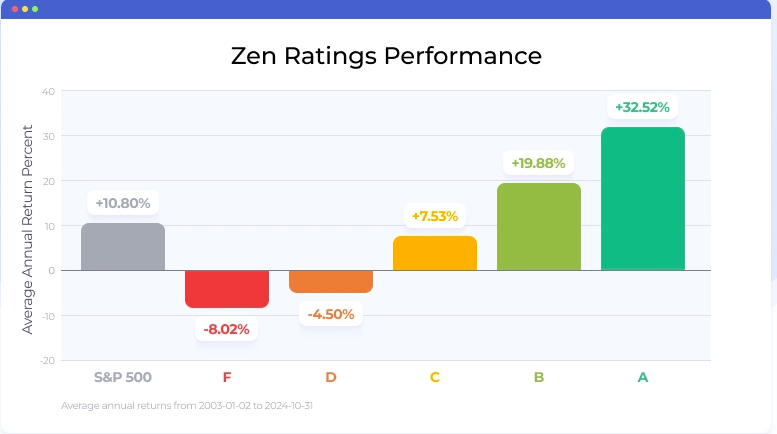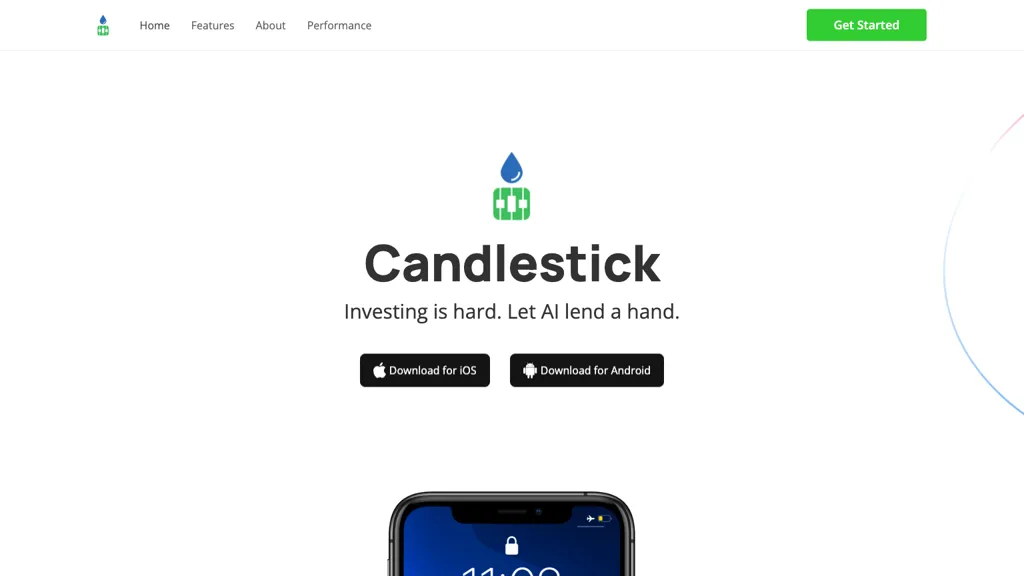Top 10 Tips On Assessing The Privacy And Security Of Ai Platform For Analyzing And Predicting Trading Stocks
Privacy and security are the top priorities when making use of AI stock Predicting/Analyzing trading platforms, as they often handle sensitive financial information as well as personal data. In the event of a data breach or misuse, it could lead to financial and reputational losses. Here are 10 guidelines to assess the privacy and security capabilities of these platforms.
1. Check the Data Encryption
Secure transmission of information: Make sure your platform uses secure protocols (e.g. TLS/SSL) for encryption of data that is transferred between your devices and servers.
Verify encryption at the time of rest. Examine if sensitive information is encrypted on the server platform, using secure standards of encryption (e.g. AES-128).
End-to-end encrypted communications: Make sure that the platform you're using offers encryption that is end-to-end for any sensitive data.
2. Examine Authentication Mechanisms
Two-factor authentication (copyright): Ensure the platform supports copyright in order to give you an extra layer of security.
Biometric authentication: Find out whether the app supports biometric login options (e.g. fingerprints, facial recognition, etc.)) for mobile applications.
Password policy: Examine to find out if your provider has strict rules regarding passwords.
3. Examine for Compliance
Financial regulations: Ensure that your platform complies the relevant financial regulations (e.g. SEC, FINRA or MiFID II).
Data protection laws: Make sure you are in your compliance with privacy laws (e.g. GDPR, CCPA), if you're operating or conducting business with regions that are protected by these laws.
Audit certifications. Check that the platform you're considering has been through third-party assessments of security or certifications.
Review Controls for Access to Data
Role-based access - Ensure that the platform is equipped with roles-based controls (RBAC), which limits access to data only to authorized users.
Permission levels - Verify that you can give different permissions to members or members.
Activity monitoring Check to see whether your application tracks and monitors the user's activities.
5. Evaluate Vulnerability and Manage
Regular updates: Ensure that your platform is always updating its software in order to fix vulnerabilities.
Penetration Testing: Verify whether the platform is regularly put through penetration testing that identifies and corrects security weaknesses.
Programs for bug bounty: Check whether the platform offers an incentive program for bug bounty to incentivize external security researchers to identify weaknesses.
6. Evaluate Data Privacy Policies
Transparency Privacy Policies: Read the privacy guidelines on the website to understand what data you provide will be used, collected and shared.
Data minimization: Ensure the platform only collects the information necessary to run the platform.
Third-party sharing: Find out whether your platform is sharing information with third-party partners, and if it does what are the terms.
7. Secure API usage should be inspected
API security: Make sure the API of the platform API uses secure authentication methods (e.g., OAuth, API keys) and secures data exchanges.
Rate limit - Check that the API is fitted with limits on rate to stop abuses or attacks using brute force.
Examine the access logs to determine if they're being monitored and audited for compliance.
8. Assess Incident Response & Recovery
Incident response plans: Ensure whether the platform you're using has a clearly defined incident response plans. This plan should cover the handling of data and security breaches.
Notification policies: Check if the platform notifies users immediately in the case of a security breach.
Data backups: Check that the platform regularly backs up its data frequently and has a disaster recovery plan.
9. Review Physical Security Measures
Data center security - Ensure that the platform's server is located in secure data centres with physical security (e.g. surveillance and access control).
Redundancy - Make sure that your platform is outfitted with redundant systems in order to ensure that data is available if hardware fails.
Geographic distribution: Make sure that data is distributed across multiple geographical locations to ensure greater security.
10. Test privacy controls on users
Data deletion. Be sure to completely erase data from the service when you stop utilizing the service.
Privacy settings: Determine whether your platform has privacy settings for controlling the data that can be shared or made visible.
Verify the data's anonymity for machine learning and analytics.
Bonus Tips:
Reputation and reviews of users - Research the reviews and feedback of users in order to understand the level of security and privacy a platform is.
Trial period: You are able to make use of a demo or a no-cost trial period to test the privacy and security controls.
Customer Support: Ensure that the platform has robust support for issues or concerns related to security.
These tips will aid you in assessing the security and privacy features of AI software for predicting or analyzing trades. It will help ensure that your financial and personal data is safe. Secure trading platforms are not just a means to safeguard your assets, but it also helps build trust and confidence. Check out the top rated on the main page for using ai to trade stocks for blog examples including investing ai, ai trading tools, ai trade, ai trading tools, trading with ai, ai for investing, chatgpt copyright, incite, incite, chatgpt copyright and more.

Top 10 Ways To Evaluate The Risk Management Of Stock Trading Platforms That Use Ai
Risk management is an important component of every AI trading platform. It helps to protect your capital while minimizing potential losses. Platforms with robust risk-management tools can help you navigate uncertain market conditions and make informed choices. Here are the 10 best tips for assessing the risk management capabilities of these platforms. capabilities:
1. Study Stop-Loss Features and Take Profit features
Customizable Levels: Ensure that the platform allows you to set individual stop-loss levels and goals for taking profits in your trades or strategies.
Make sure the platform is able to allow the use of trailing stops. They will automatically adjust themselves as the markets move in your favor.
Check if your platform allows you to make stop-loss orders that guarantee the closing of the trade at the amount stipulated, even on volatile markets.
2. Instruments for assessing position Size
Fixed amount - Ensure you can define the size of your positions according to a specific amount.
Percentage portfolio: Determine if the risk is manageable proportionally by establishing your portfolios as a percent of your portfolio's total.
Risk-reward percentage: Examine to see if you can define the risk-reward percentages for specific trades or strategies.
3. Look for Diversification Support
Multi-asset trading. Check that your platform can handle various asset classes, including ETFs as well as Forex, Options and stocks.
Sector allocation: Verify if the platform offers tools to monitor and manage the exposure of sectors.
Diversification of geographic areas. Verify whether the platform can trade internationally, which will spread geographic risk.
4. Review leverage and margin controls
Margin requirement: Make sure that the platform is clear about any margin requirements for leveraged trades.
Limits on leverage: Find out whether the platform allows users to set leverage limits to control risk exposure.
Margin Calls: Make sure that the platform sends out timely notifications of margin calls to stop the liquidation of your account.
5. Assess Risk Analytics Reporting
Risk metrics: Check whether the platform has important risk indicators, such as Sharpe ratio and Drawdown, to help you manage your portfolio.
Scenario Analysis: Find out whether your platform has the capability of generating different market scenarios in order to assess possible risks.
Performance reports: Check whether the platform offers comprehensive performance reports, which include the risk-adjusted return.
6. Check for Real-Time Risk Monitoring
Portfolio monitoring - Ensure that the platform you choose provides real-time monitoring so that your portfolio is secure.
Notifications and alerts: Check if the platform provides real-time alerts on risk-related events (e.g. margin breaches and Stop-loss triggers).
Risk dashboards - Check to see if your platform offers customizable risk dashboards. This will provide you with more information about the risks you are facing.
7. Test Stress Testing and Backtesting
Stress testing: Check whether the platform allows you to test your strategies or portfolios during extremely difficult market conditions.
Backtesting. Check whether the platform allows for backtesting, which involves the application of historical data to determine the level of risk and performance.
Monte Carlo Simulations: Check whether the application uses Monte Carlo simulations in order to assess and model the possible outcomes.
8. Evaluation of Compliance with Risk Management Regulations
Regulatory compliance: Verify that the platform complies with the relevant regulations for risk management (e.g. MiFID II, Reg T, in the U.S.).
Best execution: Make sure that the platform follows the most efficient execution procedure, which makes sure that transactions are executed at the most competitive price so as to limit any loss.
Transparency: Make sure that the platform has transparency and clear disclosures about the risks.
9. Check for User-Controlled Parameters
Custom risk rules - Make sure the platform permits you to create your own risk management policies.
Automated risk controls: Determine if the platform can automatically enforce risk management rules in accordance with your predefined parameters.
Manual overrides: Check whether the platform permits manual overrides to automate risk control in the event of emergencies.
10. Review User Feedback and Case Studies
User reviews: Examine feedback from users to assess the effectiveness of the platform's managing risk.
Case studies Look up case studies or testimonials, that prove the platform's capability to manage risk.
Community forums: Find out if the platform has an active user community in which traders discuss risk management tips and strategies.
Bonus Tips
Free trial period: Try the risk management functions of the platform using real-world scenarios.
Support for customers: Ensure that your platform has a robust support to any questions or issues related to managing risk.
Educational resources: Check whether the platform offers educational resources or tutorials on best practices in risk management.
These suggestions will assist you to determine the risk management capabilities of AI analysis and stock prediction platforms. So, you'll be able to pick a platform that safeguards your investment and reduces the risk of losses. To navigate volatile markets and achieve long-term trading successes it is essential to use a robust risk management software. View the top rated such a good point about best ai trading platform for more examples including AI stock investing, how to use ai for stock trading, trading ai tool, can ai predict stock market, ai options trading, stocks ai, AI stock price prediction, stocks ai, can ai predict stock market, ai trading tool and more.

Comments on “20 Free Facts For Picking AI Stock Picking Platforms”